|
|
|
|
Majdanek Majdanek was established primarily as a camp for political and military prisoners. Majdanek is closer than Auschwitz to the Russian border and was intended to be the prison for captured Russian soldiers on the Eastern Front. Members of the Polish resistance, as well as Jews were also sent to Majdanek. Like most of the other students on the trip, I was shocked at the preservation of Majdanek. Auschwitz-I feels more like a museum, Auschwitz-Birkenau was mostly destroyed by the Germans, and Plashov no longer exists, but Majdanek feels like the Nazis just left. Someone even mentioned that Majdanek could be fully operational again with little effort. |
|
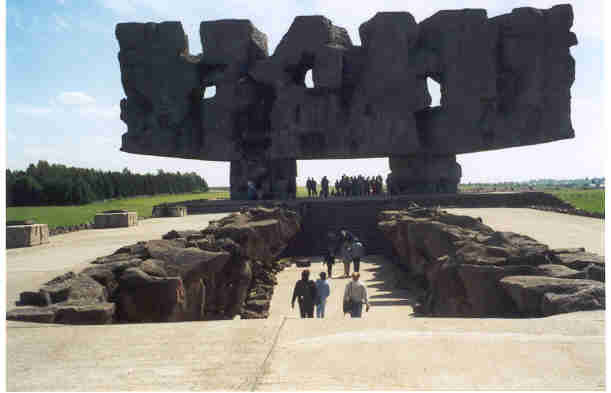 |
Monument at Entrance Once Majdanek became a shrine, this monument was built at the entrance. It is meant to re-create the walk through the valley of death, as most of those who entered these gates in WWII were walking into death. The large stone structure on the front appears to be different things to different people. Some see letters and some see people, but the only known meaning is that the six figures stand for the six million murdered by the Nazis. Enlarge Picture |
| View From the Monument This picture is taken just on the backside of the monument in the previous picture, looking down toward the camp. Enlarge Picture |
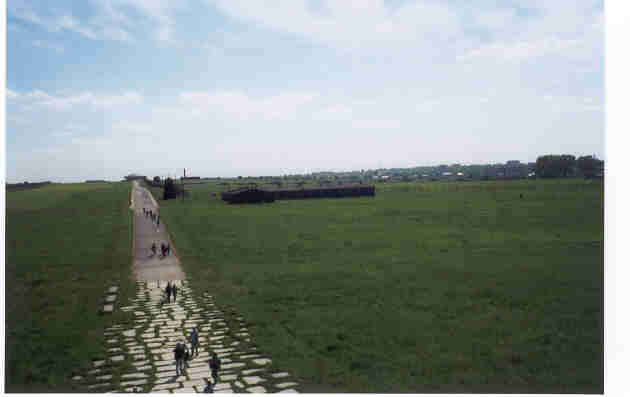 |
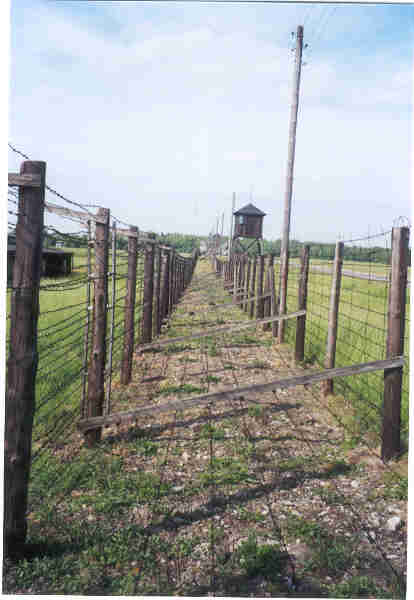 |
Three Fences In order to escape from Majdanek, a prisoner would have to successfully pass through these three successive barb-wire fences (not to mention the rifles of the guards in the distant tower). Enlarge Picture |
|
Majdanek's Barracks Nearly half a million people passed through the gates of Majdanek during WWII. Of those ~ 360,000 never returned. Enlarge Picture |
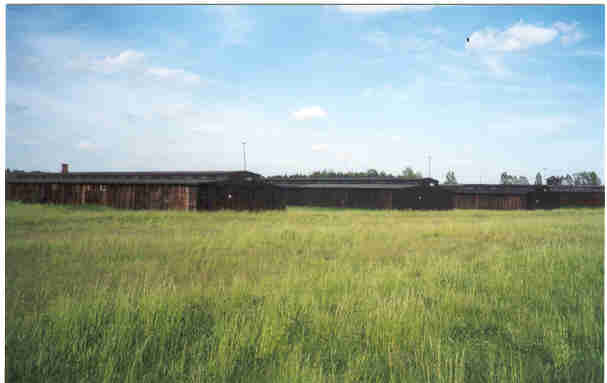 |
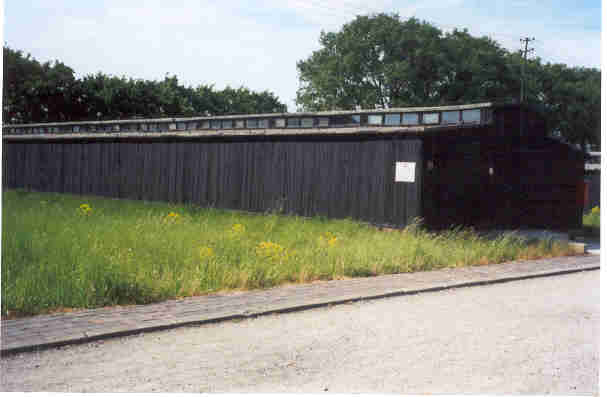 |
Close-Up As with Auschwitz-Birkenau, these buildings provided menial shelter during the bitter Poland winters and became VERY hot and humid during our early-summer visit. Enlarge Picture |
|
A Building of Shoes One of the buildings at Majdanek has a display of nothing but shoes. From the entrance to the back, the entire building is nearly totally filled with shoes. At one time, three buildings were on display with nothing other than shoes, including one with just children's shoes. Enlarge Picture |
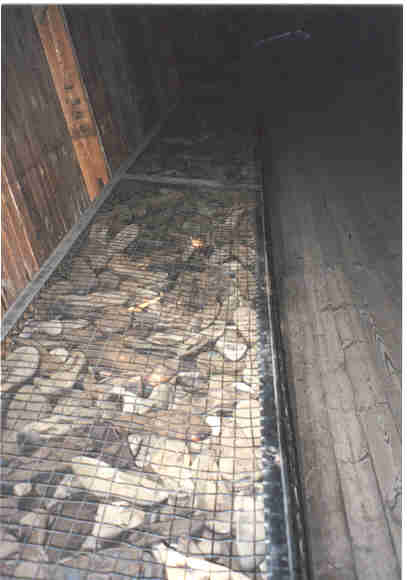 |
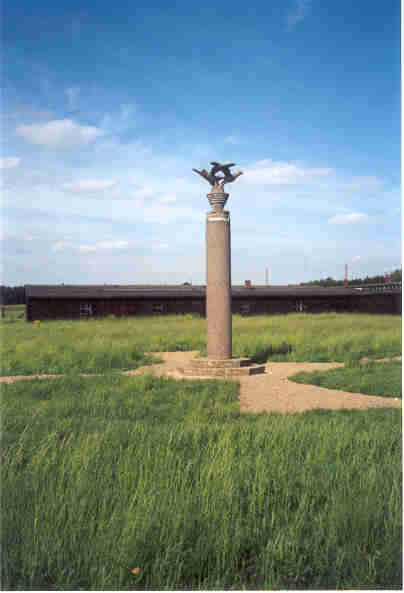 |
Three Eagles One of the commanders of Majdanek was a fan of sculptures. Anyone who was a prisoner at the camp with artistic ability could find himself assigned to designing a sculpture for the officer. According to a guide, one of the Jewish workers in the crematorium smuggled some ashes of murdered Jews out of the furnaces and gave them to the sculptor of the statue with three eagles. The sculptor either buried the ashes under the statue or somehow bore them into the stone of the monument. Either way, it became a holy place for Jews in Majdanek, and they would be able to say their prayers as they passed the statue without the guards discovering the secret. Enlarge Picture |